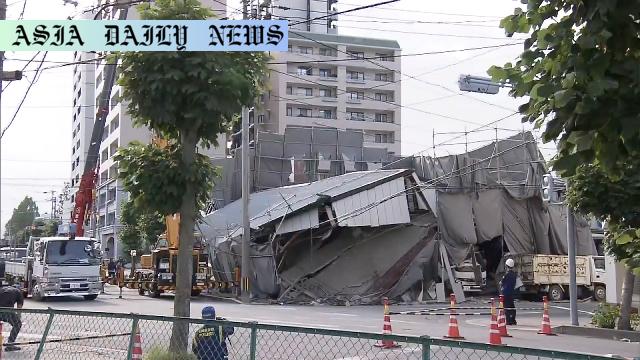Demolition site tragedy: Two workers killed during building collapse.
A demolition site accident in Fukuoka Prefecture claimed two lives.
Six workers were on-site; one heard creaking sounds and escaped.
A pedestrian and one worker remain injured and under treatment.
Debris blocked sidewalks, trapping people under the collapsed structure.

A Sudden Collapse at a Demolition Site in Japan
A tragic accident unfolded in Kurume City, Fukuoka Prefecture, Japan, as a building undergoing demolition collapsed, resulting in the death of two workers and the injury of others. This incident, which occurred in the bustling commercial district, highlights the potential hazards of construction and demolition work, especially in populated urban areas.
According to reports, the structure, a two-story shop, gave way unexpectedly on a Tuesday afternoon. The sudden collapse caused significant debris to spill onto the sidewalk, trapping multiple individuals. Emergency services were immediately contacted, and first responders raced to the scene. Among those trapped were four individuals: three demolition workers and a pedestrian. Sadly, two workers did not survive their injuries, despite efforts to save them at a hospital. The pedestrian—a man in his 50s—and one other worker are currently receiving treatment for injuries sustained during the collapse.
The Scene and Safety Concerns
Witnesses described a chaotic scene as the building crumbled. Out of the six workers present at the demolition site, one managed to escape unharmed after hearing alarming creaking sounds, signaling an impending collapse. While no official report has been released regarding the cause, structural stability and safety protocols at demolition sites are under scrutiny. Demolition work involves unique risks, and this tragedy underscores the importance of stringent safety measures and inspections at work sites.
Local authorities have begun investigating the incident, focusing on potential structural weaknesses in the building or failures to adhere to construction safety standards. Poor safety compliance or mismanagement could lead to broader questions about operator accountability and the overarching regulatory framework governing such projects. Urban settings, where foot traffic is common, amplify these risks, as was evident in the inclusion of a bystander among the injured.
Lessons to Learn and Preventing Future Tragedies
This tragic incident serves as a somber reminder of the importance of workplace safety in industries involving high-risk activities. It emphasizes the need for proactive safety training, periodic inspections, and disaster preparedness by construction companies. Authorities working with urban planners must also prioritize ensuring that pedestrians and workers are shielded from unnecessary dangers during demolition projects. Clear demarcation zones, regular auditing, and updated safety standards can play a role in avoiding such catastrophic events.
Beyond the immediate loss of life and injuries, incidents like these create ripple effects across families, businesses, and communities. Lives lost on job sites highlight the crucial responsibility of governing bodies and companies to enforce safe workplace practices. As investigations proceed in Fukuoka, both local and international construction firms can take this opportunity to reaffirm their commitment to worker and public safety.



Commentary
Reflecting on the Importance of Workplace Safety
The heart-wrenching incident in Fukuoka reminds us just how crucial workplace safety is, especially in industries like demolition and construction. These sectors are inherently dangerous, demanding unwavering vigilance and adherence to safety protocols. The loss of two workers in their prime resonates deeply, a sharp reminder of the human cost behind such tragedies. Alongside this devastation, the presence of an injured pedestrian raises concerns about urban safety, urging us to question whether enough precautionary measures are in place to protect both workers and the general public.
The Role of Investigation and Accountability
As investigations into this collapse progress, finding reasons and assigning accountability will be essential—not just for closure but to prevent similar disasters in the future. Whether it was the condition of the building, the demolition methodologies used, or lapses in safety inspection, every detail matters. Regulatory authorities must ensure transparency and take swift action to hold relevant parties accountable. Equally vital is fostering a culture of safety—not just as a compliance requirement but as a moral obligation.
Ensuring Safer Environments for All
This poignant event gives us an opportunity to reconsider worker safety standards and urban planning in highly trafficked areas. Collaboration between employers, building authorities, and lawmakers is necessary to elevate safety measures and tackle systemic issues. Adopting technology, like structural stability sensors or predictive analytics, could further optimize construction and demolition safety. Ultimately, this tragedy calls for a renewed commitment to safeguarding lives, ensuring that people return home safely at the end of every workday.